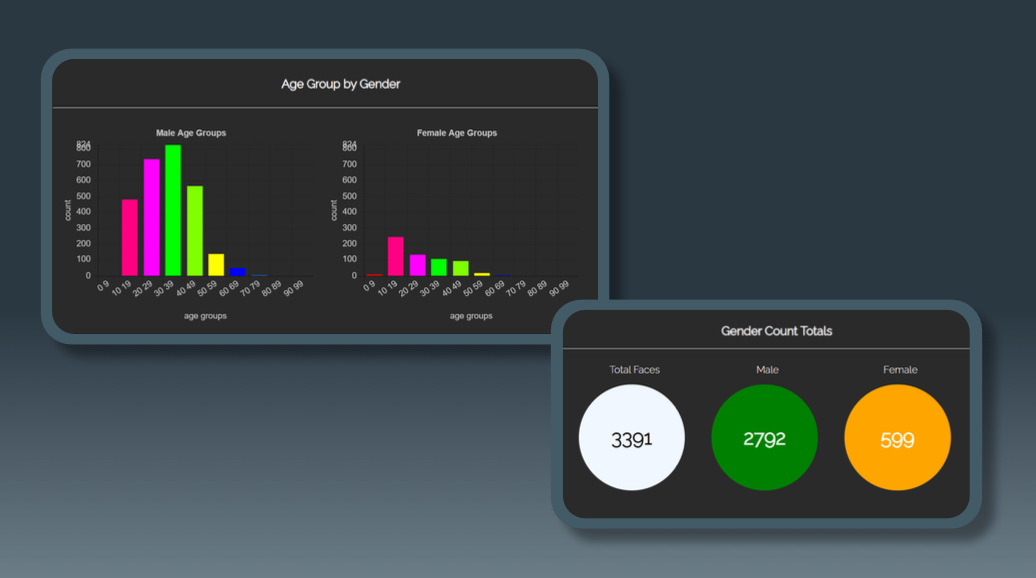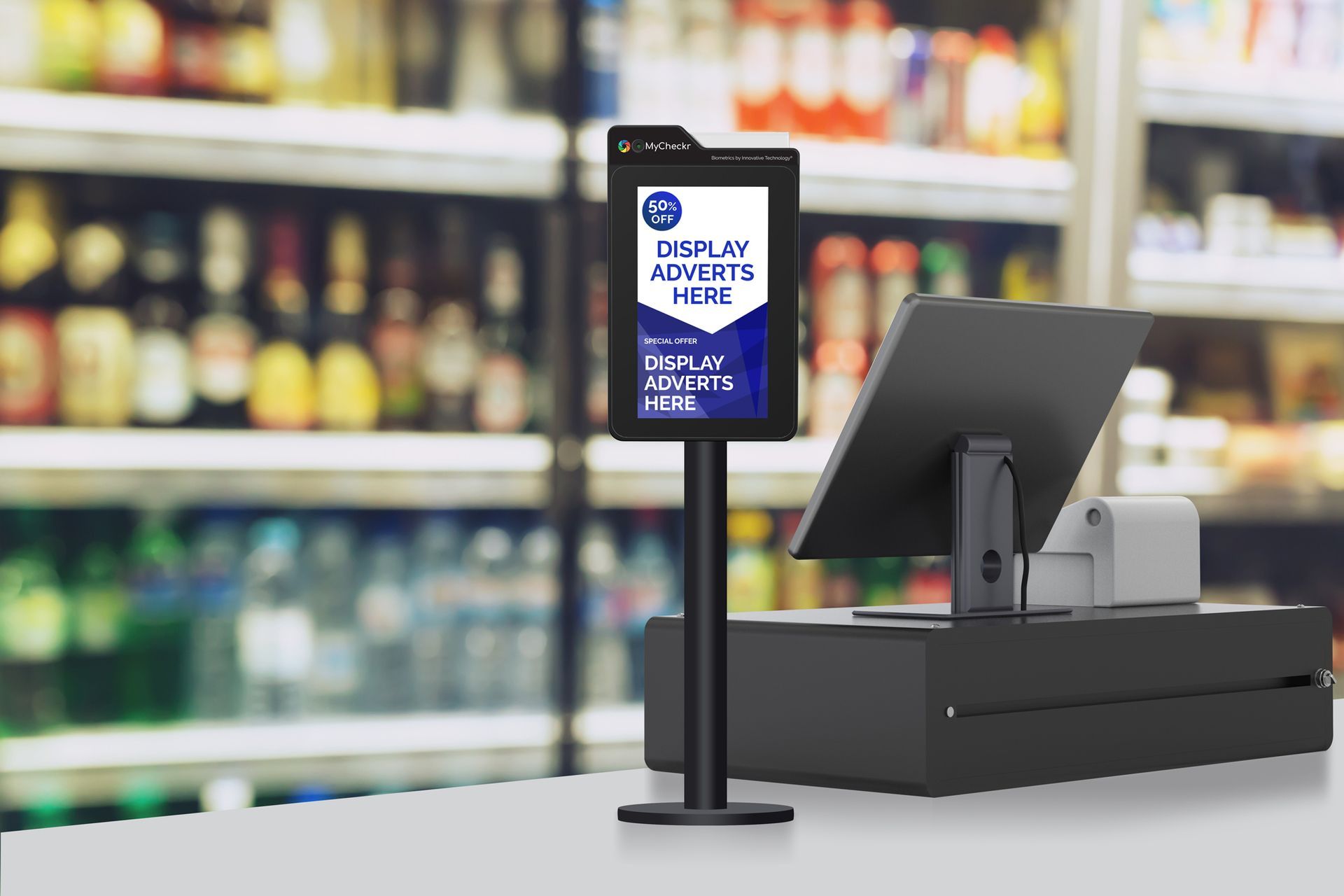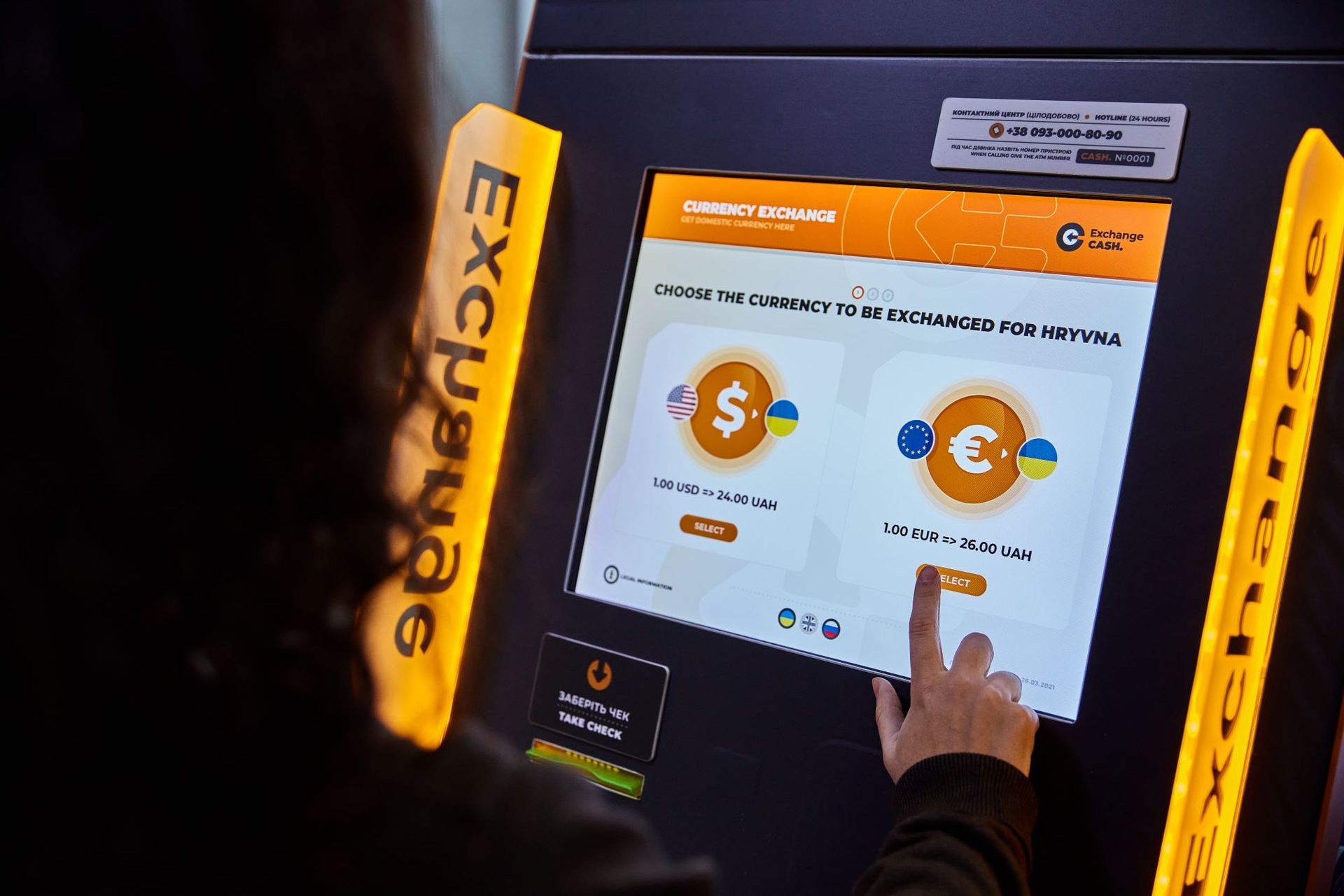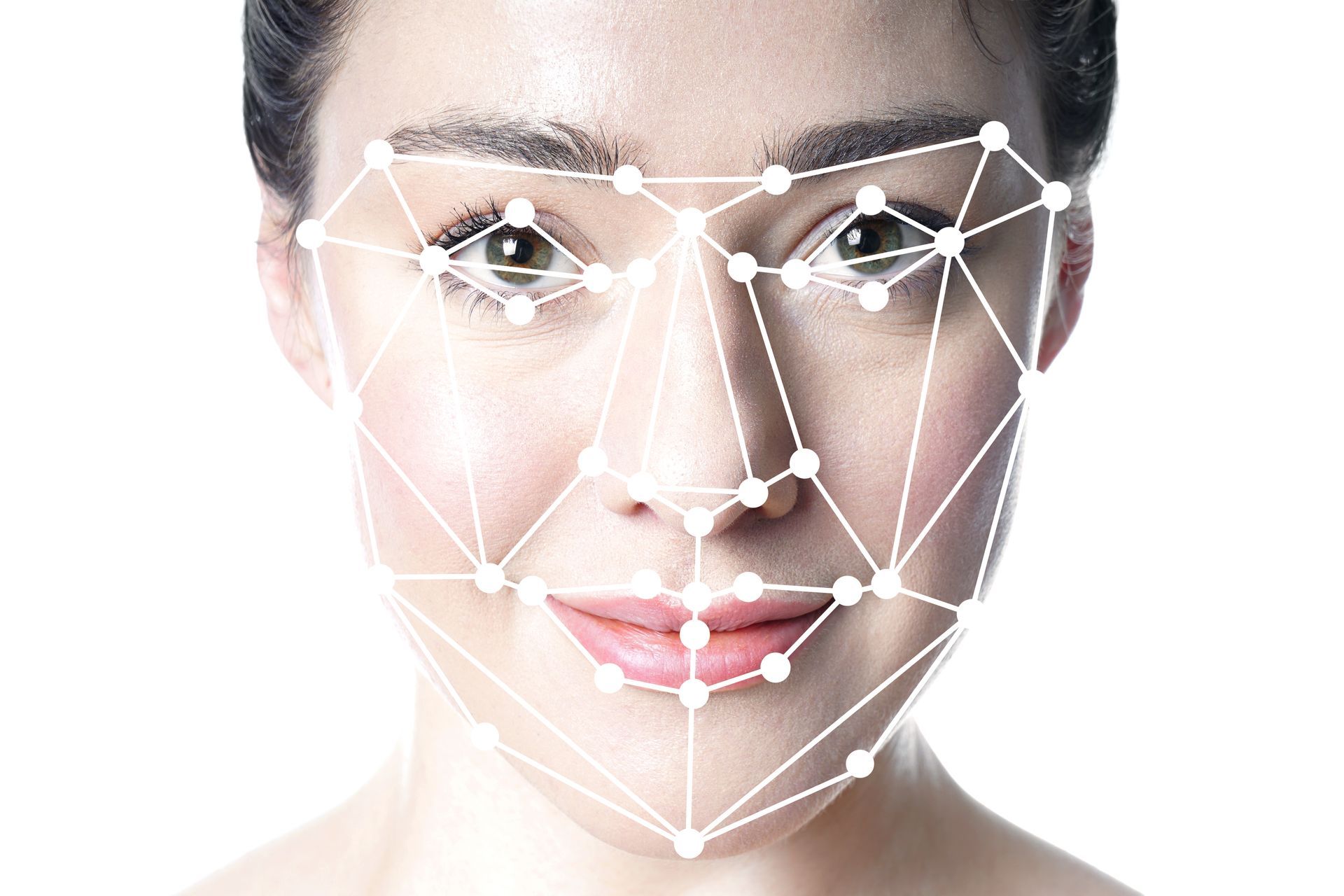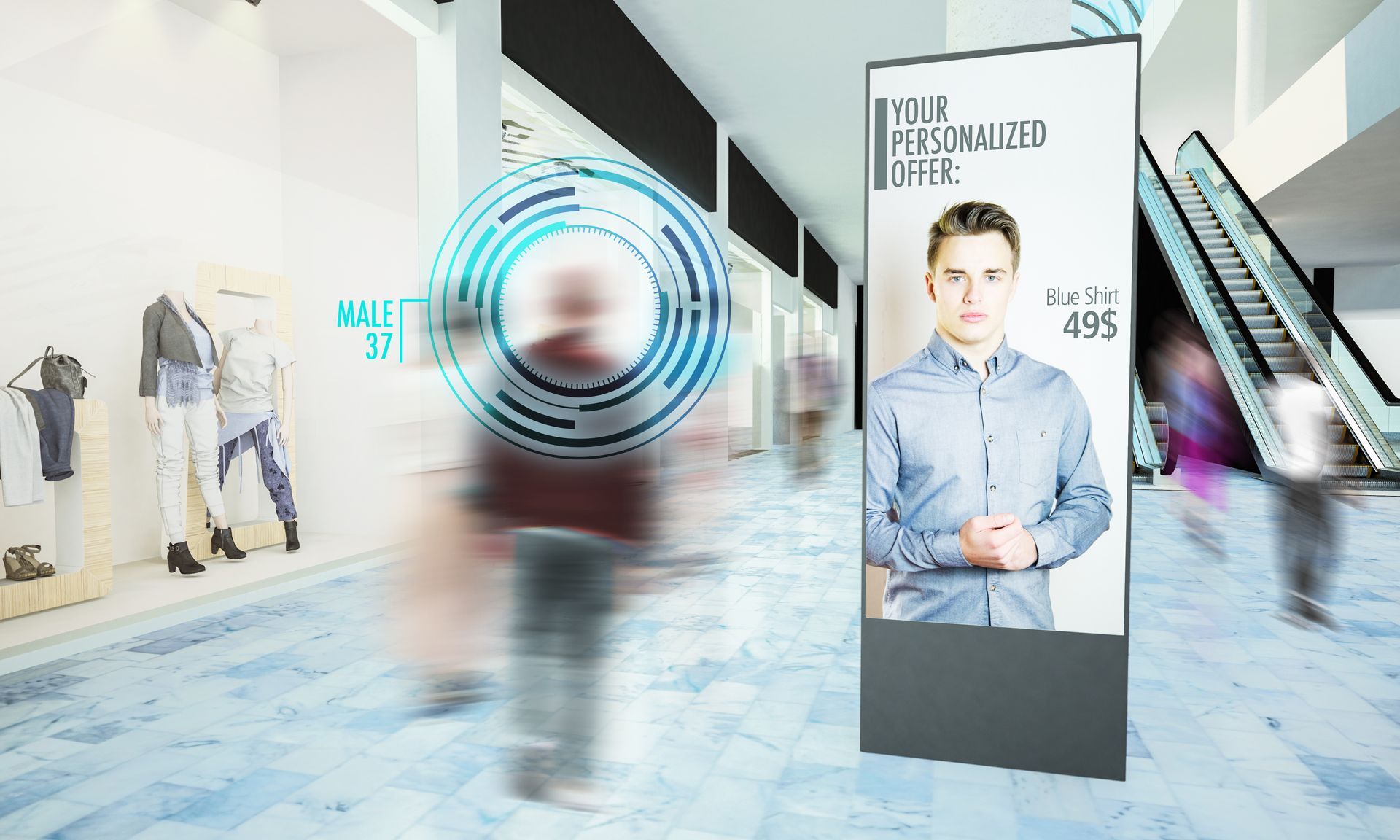What are the benefits & barriers of facial recognition software?
By Dr. Andrew O’Brien
ICU Product Manager
Innovative Technology
What is facial recognition: A brief history
Facial recognition is a very simple concept. It describes the way we can use machines to recognise a person based on their facial features. This mirrors how we as humans primarily recognise and identify people.
Facial recognition was first pioneered in the 1960s by Bledsoe et al who described a human face by the manual identification of facial landmarks. They determined various relationships between these landmarks using the available computation power at the time. These descriptors were then saved for each face and when a new face was presented, the face was manually analysed and compared with the existing faces. As technology was not very advanced at the time, this process took a long time plus the approach also suffered from variability between the saved face and the face that was to be matched. These variations can arise due to differences in head rotation and tilt, differences in face sizes, the effects of aging and light intensity between the two images.
The 1970’s saw increased accuracy with 21 facial markers developed by Goldstein, Harmon, and Lesk and then in the late 1980’s/early 1990’s the Eigen face approach, which applied linear algebra to the problem of facial recognition, was introduced1.
The Face Recognition Technology (FERET) program began to be rolled out in the 1990s. This was designed to help the commercial face recognition market. Today a number of public benchmarks exist such as Labeled Faces in the Wild and many other organisations and social media have started implementing facial recognition.
The emergence of machine learning algorithms and specialised computational hardware, coupled with the dramatic increase in the quality of cameras, facial recognition now has the potential to be a very useful tool in our society and economy today.
Artificial Intelligence (AI) & Machine Learning (ML)
The explosion in AI (intelligence demonstrated by machines) and growing field of machine learning (ML) is a key catalyst in the success of facial recognition. AI uses algorithms (defined as finite sequences of well-defined, computer-implementable instructions) which are trained to extract features from a face and convert the characteristics of those features into a single number. Machine learning (ML) is an application of AI that provides computer systems with the ability to automatically learn and improve from experience without being explicitly programmed2.
The Facial Recognition Market
The overall facial recognition market is estimated to grow at a Compound Annual Growth Rate (CAGR) of 16.6%3. The market was valued at USD 5.07 billion in 2019 and is expected to reach a value of USD 10.19 billion by 20254. This growth rate is driven by the vast number of applications and industries that have started to use such technology. As a result, many companies are competing to provide advanced solutions that range from law enforcement and population demographics, to access control and health and safety considerations.
Society Challenges & Benefits
While the potential advantages of facial recognition are numerous, there are many barriers to the general acceptance of the technology due to several factors. Firstly, there will always be a certain inertia to engage with and to adopt new technology. This is not a new phenomenon and such reluctance can be seen throughout history – for example when the locomotive was first introduced, the emergence of electricity, light bulbs, the telephone, mobile phones, the internet and social networking sites. While some of the concerns raised, especially towards the older technology mentioned, may seem trivial and maybe humorous now, they were important to society at the time. Concerns around facial technology must be understood and be addressed and if necessary robust legislation to ensure exploitation and misuse of the technology is combatted.
Another factor which causes reluctance to accept is lack of knowledge. The concept of facial recognition is relatively easy to understand and as such awareness of facial recognition technology is high, however actual knowledge of the technology is low5. From a 2019 study by the Ada Lovelace Institute, it was found that while 90% of people are aware of facial recognition technology, few believe they have any deep understanding or knowledge of the technology. Associations linking the technology with a big brother society have propagated and will continue to hamper adoption of the technology. Fears of infringements on personal privacy, normalising non-consented surveillance and no clarity to the public benefit of facial recognition to society are legitimate concerns and significant barriers for any manufacturer of the technology to overcome.
Facial technology providers must work to ensure that these concerns are understood, but they cannot work in isolation. There needs to be proactive engagement between facial technology providers, government agencies, educators and the public to find solutions and any necessary legislation. Data privacy is a huge concern, so solution providers must educate and inform the public and be completely transparent about how their data is used. They must also work together with other technology providers to minimise the exploitation of misuse of this technology, until at least concrete legislation is in place.
Facial Recognition Applications & Industries
Initial implementation of the technology must empower individuals. This can take the form of allowing users to consent to their image been used. Clear benefits that are achievable with facial recognition can then be demonstrated. For instance, one application where the benefits can easily be communicated is access control, where facial recognition can be used to allow or deny access to buildings depending on the user. This non-contact form of entry will be convenient for the user as they would no longer need to carry an ID card or remember a pin code plus it would also minimise the need for a user to touch the door or any other RF reader or keypad. This will reduce risk of spreading any contaminate and as such may be very suited to the health care sector or any institute which may have vulnerable people.
Facial recognition and age estimation can also serve a great public service in the gaming sector, where underage gambling can be combatted. The societal issues of problematic gamblers can be tackled by use of self-exclusion lists, where a person can consent to their image been stored on an exclusion database.
Then if that user attempts to gamble this technology can recognise the user and initiate several different steps to prevent the transaction or play.
What does the future hold?
Facial recognition is a rapidly growing field and, it is already beginning to be part of our everyday life. The real question is whether this emerging technology is something we should fear or embrace. The private sector must gain the trust of the public and this is through clarity and openness in what it offers. Public privacy and compliance with GDPR safeguards are vital. Organisations must engage now with policy makers to ensure that the technology is implemented and used as a benefit to society and not a tool to impinge on users’ rights. Rogue companies and providers must be challenged, and strong sanctions must be imposed.
Overall, facial recognition has enormous potential to greatly benefit society. From a convenience point of view, in automated access to buildings, secure safes, machinery or social clubs. To managing and helping combat underage gambling, access to restricted websites and helping problem gamblers. From a medical setting in quickly identifying patients and gaining immediate access their medical history, to monitoring fatigue in drivers. Facial recognition is a tool that should be welcomed but this cannot be done without first recognising and acknowledging the legitimate concerns surrounding this advancing technology.
REFERENCES
1 A BRIEF HISTORY OF FACE RECOGNITION:
https://www.facefirst.com/blog/brief-history-of-face-recognition-software/
2 How does Artificial Intelligence work?: https://www.innoplexus.com/blog/how-artificial-intelligence-works/
3 Facial Recognition Market – Global Forecast to 2024
4 FACIAL RECOGNITION MARKET - GROWTH, TRENDS, AND FORECAST (2020 - 2025):
https://www.mordorintelligence.com/industry-reports/facial-recognition-market
5 Beyond face value: public attitudes to facial recognition technology:
https://www.adalovelaceinstitute.org/beyond-face-value-public-attitudes-to-facial-recognition-technology/

